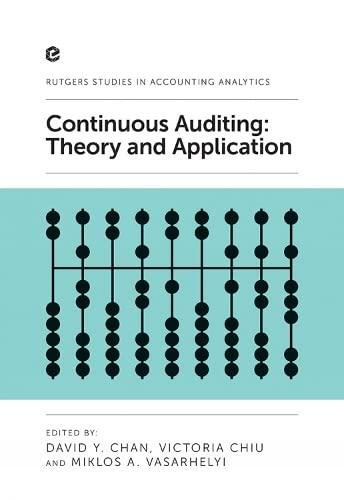Question
Help with this Cost Accounting Assignment. PROBLEM DATA Cabin Creek Products Inc. manufactures two specialty plastic products: canoe paddles and toilet seats. The following information
Help with this Cost Accounting Assignment.
PROBLEM DATA
Cabin Creek Products Inc. manufactures two specialty plastic products: canoe paddles and toilet seats. The following information is available at March 31 , 2001.
Balance Sheet, March 31, 2001
Actual and budgeted unit sales, 2001
Canoe paddles sell for $20 each and toilet seats sell for $14. All sales are on credit: 15 percent are collected in the month of sale, 45 percent in the month following the sale, and 40 percent in the second following month. Cabin Creek's products are manufactured in a two-step process that combines a special resin with a hardener. The process occurs fairly rapidly, and production is scheduled so that there is no workin-process inventory at the end of each day. The following table indicates the standard costs of manufacturing the products.
Depreciation on factory equipment is based on direct labor hours. It is computed to be $1 per hour for each department and is included in the factory overhead rates shown above. Cabin Creek pays for all labor and overhead costs (except for depreciation) in the month incurred. Raw material purchases are all made on account, 40 percent of which are paid for in the month of purchase and 60 percent in the following month. The company schedules its purchases of raw materials so that it ends each month with enough raw materials to support 60 percent of the next month's anticipated production. It schedules its production so that it ends each month with enough finished product on hand to support 30 percent of the next month's anticipated sales. At March 31, ere are 5,040 liters of Resin A, 8,772 liters of Hardener Q, 720 canoe paddles, and 330 toilet seats on hand. Selling and administrative expenses are $25,000 per month (including $1 ,OOO of depreciation) plus sales commission equal to 7 percent of total sales. These are paid in the month incurred (except depreciation). Cabin Creek desires to maintain a cash balance of $9,000 at the end of each month. If this goal cannot be met, the company uses a line of credit at the bank to borrow the exact amount needed to reach its goal. If the firm has a cash balance greater than $9,000 and also has line of credit loans outstanding, the cash in excess of $9,000 is repaid to the bank. Annual interest of 12 percent is paid on a monthly basis on the outstanding balance. REQUIRED 1. As chief financial officer for Cabin Creek, you have been asked to prepare a master budget for the upcoming quarter (April, May, and June). The components of this budget are a monthly sales budget, production budget, purchases budget, direct labor budget, factory overhead budget, cash budget, cost of goods sold budget, forecasted income statement for the quarter, and a forecasted June 30 balance sheet. 2. Review the completed master budget and answer the following questions. a. How much net income (or loss) is Cabin Creek Products Inc. expecting during the next quarter? b. How much cash does the company need to borrow during the quarter? Can it make any repayments? Explain. c. Explain why there is a difference between expected profitability and the anticipated trends in cash flow. WHAT-IF ANALYSIS 3. Suppose the company has to revise its estimates because of a downturn in the economy. Unit sales of canoe paddles and toilet seats for April, May, June, July, and August will be half (50 percent) of the original estimates. What effect will this new state of affairs have on net income and monthly cash flow? Explain why these items changed. 4. Suppose the company receives just the opposite news and now expects unit sales for April, May, June, July, and August to be double (200 percent) the original estimates. What effect will this news have on the company's net income and monthly cash flow? Explain the findings. |
Step by Step Solution
There are 3 Steps involved in it
Step: 1

Get Instant Access to Expert-Tailored Solutions
See step-by-step solutions with expert insights and AI powered tools for academic success
Step: 2

Step: 3

Ace Your Homework with AI
Get the answers you need in no time with our AI-driven, step-by-step assistance
Get Started


